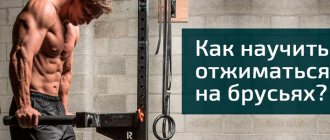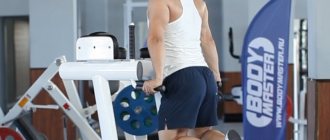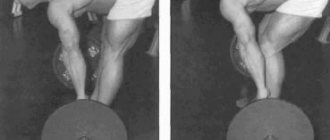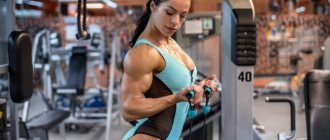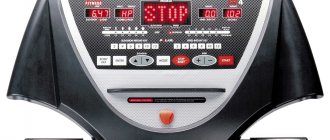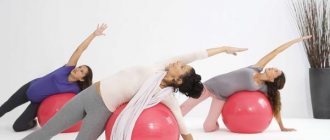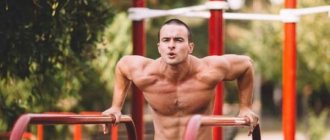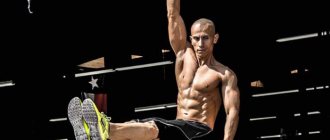Currently, street training on horizontal bars and uneven bars is becoming increasingly popular. The modern rhythm of life does not always leave time for the gym, but everyone wants to keep their body in shape.
Undeservedly forgotten shells, available in almost any yard, come to the rescue.
With a competent approach to exercise, without leaving home, you can pump up your entire upper body, no worse than in a rocking chair, and it’s absolutely free.
Main training mistakes
Why start with mistakes? In sports, as in any other area of life, the key to success is a competent approach to business. The reason for failure always lies on the surface.
The main wrong steps that novice athletes make when starting the exercises of a parallel bars training program:
Laziness. A person starts training, a month later he doesn’t see Arnold Schwarzenegger in the mirror and gives up what he started.
You need to understand that it is not easy and simple in sports. To achieve what you want, you need hard physical work and a consistent attitude to your studies.
The other extreme is excessive loads. Overestimating your capabilities leads to overtraining - a physical state of the body in which the muscles and nervous system simply do not have time to recover.
This threatens not only a slowdown in progress, but also severe depression, and getting rid of the pathological condition can take months and even years.
Ignoring execution technique hinders success. But the most dangerous thing is that it leads to injuries, which in turn will deprive you of any physical activity for a long time; there is no need to talk about the consequences.
It is important to listen to your body, give it rest when needed and increase the load when it is not enough.
If you add to this the correct execution of the exercises, the results will not keep you waiting.
What muscles work
Dips provide a workout for all the muscles of the body, primarily the pectoral and triceps. The emphasis will depend on the placement of the hands and the tilt of the body.
The triceps muscle makes up the lion's share of the arm volume. When doing push-ups, it is the internal head that mainly works, since it is responsible for the extension of both the shoulder and elbow joints. The outer and middle heads are less involved.
The pectoral muscles also act as extensors, returning the arms to their original position after moving the elbows behind the back, and activating the shoulder joint.
Unlike the triceps, all components of the pectoral muscles work under full load.
A number of muscles perform stabilizing and auxiliary functions: the serratus, lower trapezius, rectus dorsi, and even the gluteal muscles.
If we are talking about a parallel bars training program for beginners, then in the first stages they will be developed on a par with the main groups.
FOR BEGINNERS
This is the place for you if you are seeing the bars for the first time. Train 3-5 times a week for 3-4 weeks and sometimes try to do a full push-up (how to do it correctly - see the first exercise in the next block). In this block, as in all others, the exercises are arranged in order of increasing difficulty.
EXIT TO THE BAR
Stand in front of the parallel bars, along the bars. Place your hands on the bars (A). Jump to straight arms, completely extinguishing the swaying of the body (B). Jump smoothly to the ground without using your hands to return to the starting position. Repeat.
Important As your strength increases, try to jump as little as possible and include as much as possible in the arm lifting phase.
KNEES LIFT
Place your hands on the bars and come out with straight arms. Move your legs forward a little, as in photo (A). Without changing the position of your body, pull your knees as close to your shoulders as possible (B). Return to starting position and repeat.
EXIT TO PARTS + NEGATIVE PUSH-UPS
Stand in front of the parallel bars, along the bars. Place your hands on the bars (A). Jump to straight arms, completely extinguishing the swaying of the body (B). Now slowly, for 6-8 counts, lower yourself down, bending your arms (B). Jump to the ground, returning to your starting position. Repeat.
HORIZONTAL PUSH-UPS
Place your arms and legs on the bars, extend your body in line with your legs, as in photo (A). Bend your elbows and lower yourself as low as possible (B). Return to starting position and repeat.
Exercise technique
Bars are a fairly versatile sports equipment and allow you to perform many different gymnastic elements.
But in the training program, it is push-ups on the uneven bars that play a key role, so we will focus on them:
- It is necessary to start work from the top point, which will allow the muscles to prepare for the load. Starting from the bottom position promises microtraumas and sprains.
- Smoothly lower yourself down, no inertial force, all movements must be under control, smoothly and clearly. Try to feel the tension and avoid shaking your body.
- Having dropped to the level where you feel a stretch in your chest (the signal will be a slight burning sensation, but not painful sensations), hold for a second and take a deep breath.
- As you exhale, begin to smoothly lift your body up. Watch the location of the elbow joint; it should not bend towards the body. Over time, the rate of ascent can be increased.
- Concentrating on the target muscle groups, perform the required number of repetitions.
For a clearer understanding, check out the videos of parallel bars training programs.
You are in the section:
Sports and beauty > General section > What muscles can be pumped up on uneven bars
Interested in the question, what muscles can be pumped up on the uneven bars ? Then this article is just for you; in it we will look at all the nuances of working with this wonderful projectile.
Bars, like horizontal bars, are considered a publicly available sports equipment, and you can find it in almost any yard, on any school playground. Unfortunately, not everyone understands all the possibilities that parallel bars provide, but I think after reading this article, many will include parallel bars exercises in their training program.
The effectiveness of parallel bars exercises
In the modern world, more and more modernized exercise machines are appearing to improve and conveniently pump certain muscle groups. But during the birth of bodybuilding, the parallel bars exercise for pumping up the pectoral muscles occupied one of the main places.
You probably have a question: why is such an effective exercise not so popular in our time? I assure you that parallel bars exercises remain effective to this day. There are two main reasons why people try to avoid this projectile:
- Parallel bars exercises are multi-joint exercises and are considered difficult and uncomfortable for some. Why puff yourself up when there are convenient exercise machines. Although, if you love and work correctly on the uneven bars, the result will be stunning.
- It just so happens that parallel bars are considered the most dangerous exercise machine. But one can argue with this belief, because you can only get injured on the uneven bars if you use the wrong technique for doing the exercises.
The most interesting thing is that regular training on the uneven bars will give you the opportunity to feel a noticeable effect in a short time
Mass gain exercises
After several months of bodyweight training, when your ligaments and muscles have adapted to stress and strain, you can begin a parallel bars training program to increase muscle mass.
A feature of training for this purpose will be the use of various weights, be it specialized weights or an ordinary weight suspended on an army belt.
The body responds with hypertrophy of muscle fibers only to additional load.
Determine experimentally with what weight you can do 8-12 repetitions per set. This will be your working weight.
Triceps work
For pumping the triceps muscle, a narrow arrangement of bars, ideally shoulder-width apart, is best suited.
The technique is as follows:
- Keep your body straight, trying not to lean forward;
- Bring your elbows as close to your ribs as possible;
- Lower yourself to a right angle; if lower, the load will go into the chest;
- Do not straighten your arms at the elbows completely.
When doing this, try to mentally concentrate on your triceps; if you don’t feel them tense enough, it means you’re doing something wrong.
Particular attention should be paid to additional weights.
The elbow joint, which itself is easily susceptible to injury, takes on a greater load. If you experience the slightest pain, you should definitely reduce your weight.
Variations of exit by force
It may take you weeks, months, or even longer to perform your first decent two-arm muscle-up, but once you've mastered it well, you'll finally be ready to move on to more advanced variations of the exercise.
Exit by force with narrow and wide grips
Like pull-ups, two-arm muscle-ups are usually performed with a shoulder-width grip, but can also be done with a wider or narrow grip to make the exercise more challenging. Power-ups performed with a close grip are especially difficult. Over time, gradually reduce the width of your grip until your palms finally touch each other.
Slow force-exit with two hands
Two-Arm Slow Power Out
Once you have a feel for how to properly perform a jerk power-out, your next big challenge will be the slow power-out. Once you have been able to do 6-7 snatches, be prepared to do this exercise at a slow pace.
As mentioned above, you can sometimes use a false grip for muscle-outs, but there is actually a special false grip for slow muscle-outs. For this variation, clenched fists are placed on the top of the bar, with the bar positioned in the hollow of the wrist. Sure, it's a little heavy on the forearms, but when the goal is slow movement, it gives them better leverage.
During the transition phase, you need to move your legs further away from your body to balance the weight behind the bar. The skills and abilities gained from hanging leg raises can be very helpful here, but the exercise still requires a lot of practice. Negative pull-ups on a low bar will also be useful.
Two-arm power-up on uneven bars
Two-Arm Power-Up on Parallels
Performing a power-up on the parallel bars requires tremendous grip strength as well as overall body coordination. If you want to try this exercise, first learn to confidently perform a slow power-up on a high bar, then practice hanging on the parallel bars a little to get used to it. You will have to use a false grip, with the ends of the bars facing your forearms. You should also tuck your feet together or adopt a corner position to keep your feet off the ground. These movements alone may require training. Then from this position begin to pull yourself up. Soon you will be ready to perform a full power-up to the top of the exercise. As you begin to master this exercise on the parallel bars, remember that your chest should sag between your hands more than on the bar, as when performing a muscle-up on the rings.
Exit by force with a clap
Power-up with a clap
Once you've practiced the power-up enough, you'll finally be ready to try pushing your body beyond the normal range of motion and pushing off the bar completely. Once you're in the air, you can bring your arms up to your body, do a squish, or anything else free-style of your choice. As you perform a plyometric power pop, try using your hips to jump higher over the bar.
Exit by force overcoming the crossbar
Exit by force overcoming the crossbar.
Start by placing your foot on the bar. Clearing the bar takes power-up to the next level. Instead of hovering slightly at the top of the exercise, in this case you throw your body over the bar. Remember to swing your hips in the opposite direction of the bar to gain extra momentum. Mentally, this exercise can be intimidating at first, but if you really want to learn, don't let fear keep you from trying to master it! If you are able to perform a two-arm power exit and jump over a horse, then this exercise is up to you. It may be easier for you to lean your foot on it as you climb over the bar until you can confidently perform this maneuver.
Exit by force with transition to a standing position on the bar
Exit by force with transition to a standing position on the crossbar
This variation involves reaching a standing position on the crossbar, rather than overcoming it. This is a spectacular freestyle movement that requires courage and balance! Try it at your own risk!
Exit by force with a mixed grip
Mixed-grip power-up
Performing a mixed-grip power-up is harder than it seems. Making a soft transition from the position under the bar to the top in this way is quite difficult, since the body on the side of the hand holding the bar with a reverse grip will have difficulty rising above the bar. Therefore, the body on the side of the hand holding the bar with an overhand grip will have to do most of the work. At first, the transition will feel like you're swaying a little from side to side as you look for a way to get your underhanded hand over the bar. Keep training!
Reverse grip force release
Reverse-grip power-up
Unlike pull-ups, which are usually easier to perform with a reverse-grip, performing a two-arm power-out with your palms facing you is much more difficult than with your palms facing the opposite direction. To perform the reverse grip exercise, you need to generate a lot of explosive power by thrusting your hips and arching your body in a large arc as you approach the bar. Since you can't use a false grip with your palms facing you, let them rotate around the bar as you move your body up. Perform this movement with caution as it places significant stress on the thumbs during the transition phase. At first, you may have to rest your chest on the bar as you move your arms.
Force exit with cross grip
Cross Grip Power Break
As the name suggests, this variation involves performing the exercise with your arms crossed in an X shape, with each hand on the opposite shoulder. In this case, the hand that is located below should do most of the work. So start mastering this exercise in such a way that your dominant hand is located under your passive one. I trained for a long time before I learned how to do this exercise, and I am still working on my technique. Even if you are very good at doing a two-arm power-up, it is unlikely that you will be able to perform this variation the first time.
Exit by force with a change of grip
Power-up with a change of grip
The two-arm power-out with a change of grip is one of the most difficult plyometric variations of the exercise. To perform it, hang from the bar with a reverse grip. From this position, pull yourself up explosively, changing your grip during the transition phase. You will have to use a lot of explosive force to jump high enough off the bar, grab it again, push your body up and complete the exercise.
Force exit with a 360° turn
360° Power Out
In this exercise, you release the bar at the top of the power out and rotate your body 360° before grabbing the bar again as you lower yourself down. Moves like this look cool, but like many other freestyle variations, they aren't necessary for those who just want to be strong and stay in good shape. In addition, the higher the complexity of the exercise, the higher the risk of injury (I will return to this idea later).
One-handed force exit
One-Arm Power-Up
Most people will probably never come close to performing a one-arm power-up, but the exercise is within the physical capabilities of a person. To verify this, just look at the search results on YouTube for this query. And while one of the chosen ones may be able to conquer this peak, for us mere mortals, it should serve as a standard of true strength, so that we humbly and motivatedly work on ourselves. Is there really not a single physically strong person who can perform at least a couple of repetitions of this exercise on two hands, if someone is able to do it with one?
Author: Al Kavadlo
Work on the pectoral muscles
For chest training, parallel bars slightly wider than shoulder width are suitable.
To shift the load from the upper chest to the lower, you need to tilt your body forward as much as possible, while spreading your elbows wide, and lowering yourself as low as possible, feeling the stretch. Keep your shoulder blades down and don't round your shoulders.
Since the pectoral muscles are quite large and durable, the number of repetitions can be increased to 15, and the break between sets can be reduced to one minute.
But only if the exercise is performed correctly, otherwise you can overload the stabilizer muscles, which can lead to tears.
EXPERIENCED
If you can already do a couple of dips, move on to this block. The goal is to learn how to perform 20 or more regular push-ups at a time. In parallel with increasing your performance in push-ups, do not forget other exercises for experienced ones in order to achieve versatile and maximally harmonious development.
REGULAR PUSH-UPS
Place your hands on the parallel bars, push your feet off the ground, and come out onto straight arms. Bend your knees slightly and move your pelvis back. In this position, the body will lean forward slightly, which will reduce the range of motion in the shoulder joints, protecting them from injury (A). Bend your elbows and lower yourself until your shoulders (the part of your arm from the elbow to the shoulder joint) are almost parallel to the floor (B). Do a push-up with your arms fully extended. Repeat.
STRAIGHT LEG RAISES
Place your hands on the bars and come out with straight arms. Move your legs forward a little (A). Without changing the position of the body, raise your legs, slightly bent at the knees, to the horizontal or higher (B). Smoothly return to the starting position and repeat.
ALTERNATE LEG RAISES
Place your hands on the bars and come out with straight arms. Keep your legs and body vertical (A). Raise your right leg to horizontal or slightly higher (B). Lower it back to the starting position and lift your left leg (B). This is one repetition.
TURN IN THE CORNER
Stand on straight arms, then raise your legs slightly bent at the knees so that your feet are higher than the bars (A). From this position, slowly turn your body and legs, first to the right (B) and then to the left (C). When turning, try not to bend your elbows too much. This is one repetition.
STRAIGHT LEG RAISES + CORNER TURNS
Stand on straight arms, bringing your legs slightly bent at the knees slightly forward (A). Smoothly lift your legs above the bars (B). Now, maintaining the resulting corner, turn first to the right (B) and then to the left (D). Return to the starting position with your legs down. Repeat.
PUSH-UPS WITH ANGLE
Stand on straight arms, then raise your legs slightly bent at the knees so that you get a right angle between your hips and body (A). Bend your elbows and lower yourself down, maintaining corner (B). Return to the starting position without lowering your legs and repeat.
DIAGONAL PUSH-UPS
Place your palms on the ground slightly wider than shoulder-width apart, and place your legs straight on the parallel bars, as shown in the photo. Make sure your body is in line with your legs (A). Without bending at the waist, bend your arms and lower yourself as close to the ground as possible (B). Return to straight arms and repeat.
Important This exercise is not recommended for people with cardiovascular health problems or visual impairment.
ONE-ARMED REVERSE PULL-UPS
Approach the bars from the side and grab the bar closest to you with your right palm from below, move your legs slightly forward, hold your free hand behind your back (A). Bend your left elbow and pull yourself toward the bar (B). Return to starting position and repeat. After doing the required number of repetitions with one hand, do the same number with the other.
Important While performing this exercise, do not bend at the lower back and do not sink your pelvis down.
WALKING ON YOUR HANDS
Stand on straight arms (A) and walk on your hands, alternating them (B), to the end of the parallel bars. Jump to the ground, turn around and continue. One pass counts as one repetition.
JUMPING ON HANDS
Stand on straight arms (A). Jump 10–20 cm (B), trying to help yourself with your legs and not bend your elbows too much, move forward to the end of the bars. Jump to the ground, turn around and continue. One pass counts as one repetition.
REVERSE SHRUGS
Stand on straight arms (A). Shrug (B). Return to the starting position without bending your arms. Repeat.
Important This exercise will not only make it easier for you to perform many exercises on the horizontal bar, but will also be extremely useful for preventing injuries to the shoulder joint
Working out the press on uneven bars
In pursuit of the desired six-pack, people become fixated on classic crunches and well-promoted benches. Meanwhile, it is the parallel bars that can provide the fastest and most aesthetic pumping of the lumbar region, but the role of this projectile has been undeservedly forgotten.
In addition to the fact that the abdominal and oblique muscles work as auxiliary muscles in any exercise on the uneven bars, there are ways to focus specifically on the abs. Here is one of them:
We perform an approach to the uneven bars in the starting position, with weights on our feet.
Raise your knees towards your body, keeping it straight. The first repetition is lifting straight, the second is bending to the left, the third is to the right.
And such a cycle is for about 15-30 repetitions, the number of approaches until failure. Recovery break for three days.
After several months of training, when lifting with bent knees becomes too easy, repeat the same thing with straight legs.
Why is this more effective than traditional methods?
The abdominal and oblique muscles work synchronously with the support of the back in everyday life, and the load on them is distributed evenly.
As with practicing this method. Collaborative work will give a more tangible effect than local work.
Parallel bars training program
The choice of training regimen depends on your goal (lose weight, build up) and the muscle group that needs to be worked out. For example, a guy wants to lose weight and at the same time build up his shoulders. He will need to perform partial incline push-ups at an intense pace with a minimum gap between sets. The preparation of a training program should be approached individually, but most schemes include the following exercises on the uneven bars:
- push-ups with emphasis on triceps;
- push-ups with an emphasis on the chest;
- leg lifts for the press;
- parallel pull-ups;
- regular pull-ups;
- static abdominal training (corner).
The duration of classes, intensity, number of repetitions of approaches - all this affects the final result. You need to choose a training option based on your goal. Here are some recommendations for beginners that are needed for effective training:
- To lose weight. You should perform 10-12 repetitions in each approach, taking a break of no more than 20 seconds between them. This will help you keep your heart rate in the required range to speed up the fat burning process. The complex must include at least 3-4 exercises, and the duration cannot exceed 25-30 minutes.
- To strengthen the muscles and pump them up a little. It is necessary to exercise at a more relaxed pace; rest can be up to 1 minute between approaches, of which there should be at least 4-5 for each exercise. There should be at least 15-18 repetitions. You can use a little weight.
- For strength training. In this case, there is no way to do without additional weight. Take a backpack and put heavy books, dumbbells (if you have them at home) or something so that you get 6-7 kg of additional weight. Select 3-4 exercises for the complex, perform 3-4 sets of 7-8 repetitions. Rest can be 1-2 minutes.
- Loceryl for nail fungus
- How long to cook corn
- Top 10 banks with the lowest interest rates on loans
Relief development
Not all athletes set themselves the goal of increasing muscle mass. For many, endurance and drawing are more important.
The parallel bars training program for relief involves a large number of repetitions with your own weight.
The nature of training in this case will be determined by the specific goal of the athlete.
If you need to dry out in general, reduce the subcutaneous fat layer as much as possible so that the muscle relief becomes clearly visible, then the entire training process will be built on an aerobic principle.
You sweat, you feel an overload of the respiratory system - it means you are doing everything right, the excess weight is gone.
Exercises on parallel bars are very energy-intensive by default, so they are perfect for this purpose.
The main thing is not to cross the fine line, from which, along with getting rid of fat, the body begins to burn muscles.
To avoid this, just follow the following recommendations:
- Let the body rest, all the main processes occur during sleep, as a response to the work done during the waking period;
- Take cortisol blockers, the so-called “stress hormone” that destroys muscles, for example, ascorbic acid is available and safe;
- Do not consume fast carbohydrates (sugar) before training; the body will not begin to use fat as energy while the blood is saturated with glycogen;
- Avoid alcohol, nicotine and junk food.
But sometimes it happens that there are no problems with excess weight, and the athlete is simply dissatisfied with individual muscles and even bundles of muscles.
In this case, isolation training will be useful. All muscle groups listed in the article can be improved to overall body condition in a targeted way.
One cannot ignore the so-called plyometric exercises, on the basis of which the increasingly popular CrossFit culture is based.
Their essence lies in the fast and explosive execution of repetitions, when at the end point of the amplitude the body hangs in the air for a moment.
Dilute your weekly parallel bars training program with plyometrics, and your efficiency will increase significantly, your circulatory system and heart will be strengthened.
Safety Tips
In order not to overshadow your activities with injuries, be sure to follow the following precautions:
- Check the projectile for strength and stability.
- Do not use bars where one pipe is higher than the other.
- When training outside in rainy weather, wear gloves with a grippy surface. If you slip while under load, you can get a serious sprain or simply fall painfully.
- Jump off the bars carefully.
- Watch for pain in your joints and ligaments. It’s better to skip a few workouts to recover than to say goodbye to the sport later.
All this will help you make steady progress and get only pleasure and benefit from your classes.
